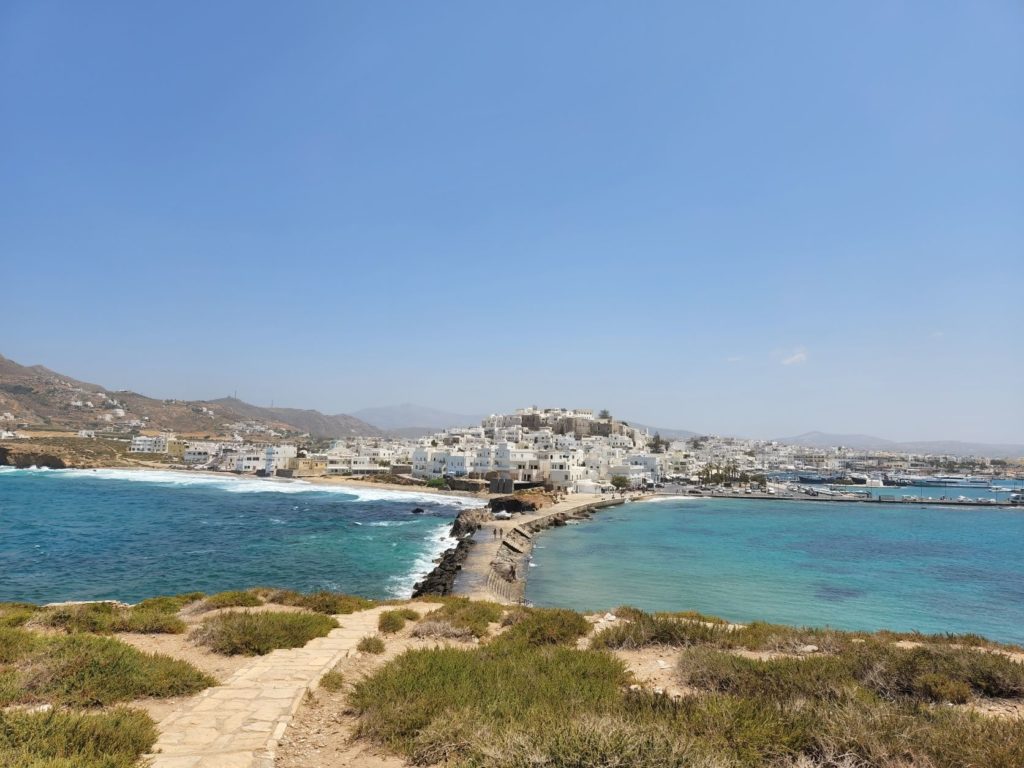
When we decided to honeymoon in Greece, we faced a common question: Which Greek island do we choose? A classic, like Santorini? A party island, like Mykonos? Something entirely different? (Spoiler: We chose Naxos.)
We knew we wanted a relaxing experience. But we also knew we didn’t just want to lie on the beach for a week. Looking for the right balance of relaxation and activity, we landed on the island of Naxos.
Some considerations included:
- Time/Size: We planned to spend about one week in Greece, including a couple of days in Athens at the end. We wanted to avoid packing up to move too often, so we wanted to stay on just one island. That meant the island needed to have enough to do to entertain us for nearly a week.
- Activities: As said above, we were looking for the right blend of relaxation and activity. We wanted an island that had beautiful beaches, hiking and history. Some things we did not care about were shopping and nightlife.
- Scenery: While we didn’t necessarily have specific scenery in mind, we were looking forward to seeing the iconic clear blue waters of the Aegean and small white Greek buildings.
Naxos seemed perfect for our requirements:
- Time/Size: Naxos is the largest island in the Cyclades, with plenty to do to keep us entertained for most of a week.
- Activities: With huge, nearly empty beaches, clusters of small villages and mountains that reach the highest point in the Cyclades, Naxos had the ideal mix of relaxation and activity for us.
- Scenery: Naxos also has the iconic white houses and blue seas of the Cyclades Greek islands, but without the crowds and expenses of Santorini and Mykonos.
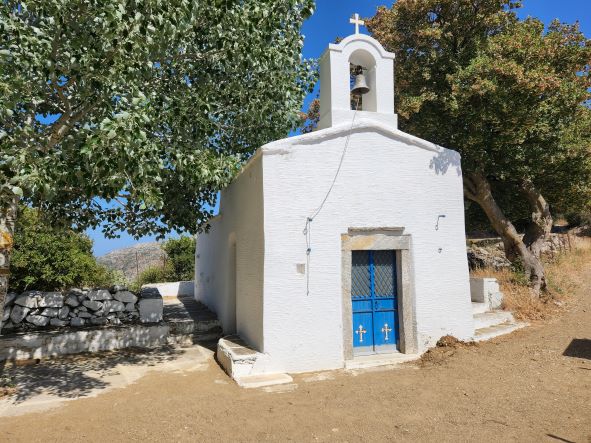
More details on Naxos are below. But first…
Runners up:
- Santorini: Possibly the most famous Greek island. From research, it seemed like a great place to stay for just 1-3 nights, not 5+. Supposedly, you can walk the length of the island in half a day. Also, popular equals expensive, and we knew our money could go farther elsewhere.
- Mykonos: This island is possibly the second most popular to visit in the Cyclades. Or first if you’re looking for a party. Mykonos is also popular on social media with its famous white houses with blue doors. Because it’s known as the party island, it didn’t fit our relaxation requirement.
- Crete: Crete is a large island close to the mainland known for its nature and history. Our main reason for deciding against it was the size. It takes about five hours to drive from one end of the island to the other. People say when visiting Crete, you should stay on one of the island for a few days, then move to the other end for the rest of your stay. Unfortunately, we didn’t have enough time to make the most of it.
- Hydra: This island was intriguing because it’s a small, car-less island very close to the mainland. We don’t own cars at home and prefer to get around using bikes and our own two legs whenever possible. However, Hydra also didn’t fit the size requirement of the island, and we were worried it would be too small for five days.
- Paros: This island was first runner-up to Naxos, and we considered taking a day trip there during our stay on Naxos. According to our research, Paros is essentially Naxos’ younger sibling. According to my research, it caters more to tourists interested in shopping and nightlight.
If you’re looking for reasons to visit Naxos, consider:
Gorgeous Beaches
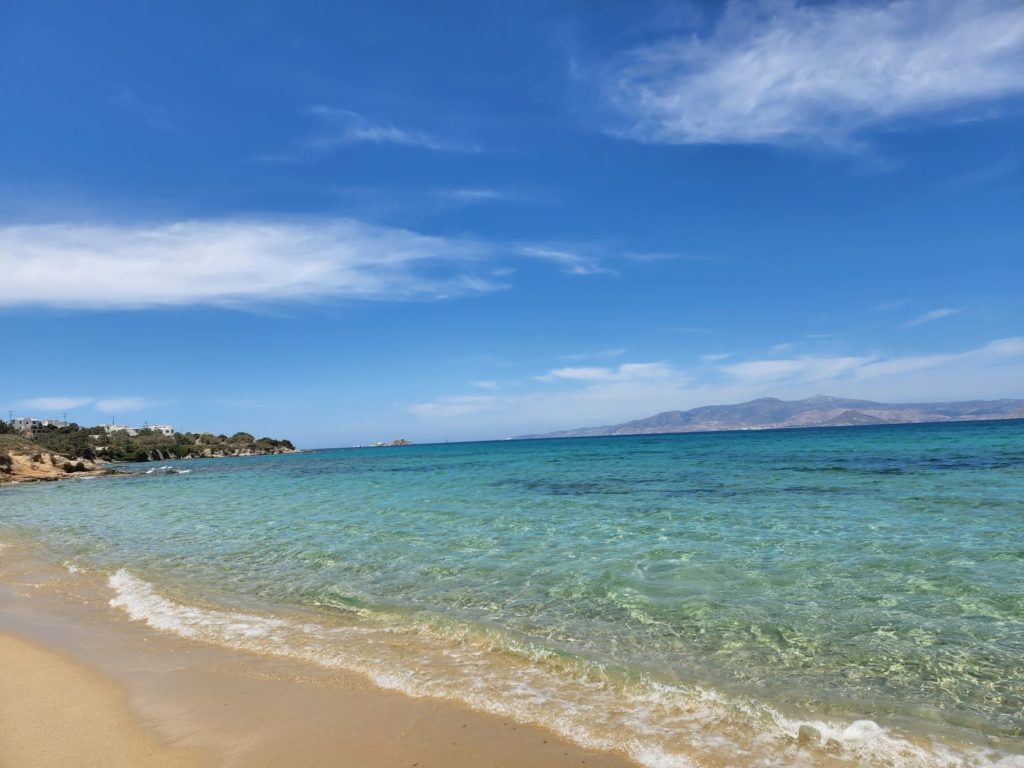
I’d read that the best beach on Naxos was Plaka Beach. We stayed at a hotel in this neighborhood with private access to a section of the beach. From this area, we were also able to walk to a couple of other beaches nearby.
Plaka was a nice sandy beach with mostly calm, clear blue water and not too many crowds. We stayed at the Villa Paradise Hotel, which gave us semi-private beach access with lounge chairs. We took full advantage of these amenities the first two days.
During these first two days, we also walked down to two other main beaches. We walked about a mile to Petrino beach along a long stretch of beach and sea. They were mostly sandy but got a little rockier at certain stretches.
We also walked to Kastraki Beach. The water at this beach seemed a little bit rougher, with better conditions for windsurfing or other water sports.
(Side note: It was very windy when we visited Naxos. During the summer, the Cyclades islands experience Meltemi Winds. These winds make the islands popular for windsurfing, but a bit less relaxing. Luckily we were there early enough that the winds were not yet at full speed.)
Scenic Hiking
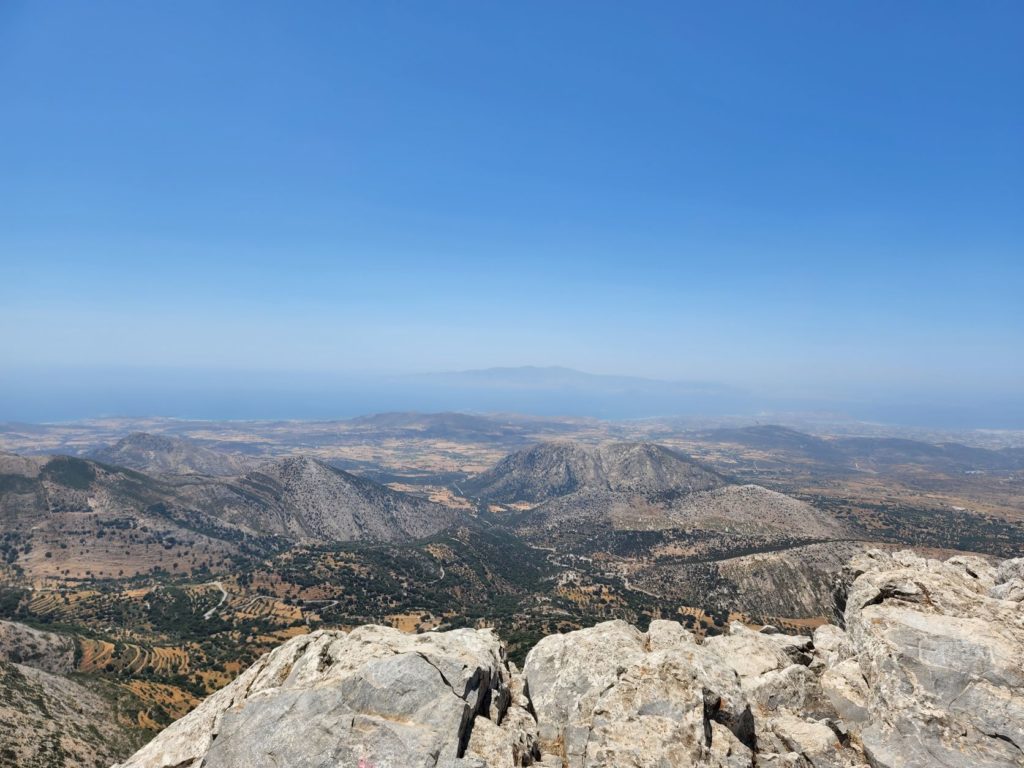
I’ve mentioned before that I love hiking. So it’s no surprise that one of the main reasons we chose Naxos over some other Greek islands was the hiking. There is a long hike on the island that takes you to the highest point in the Cyclades, Mt. Zas. According to Greek mythology, Mt. Zas is where Zeus was raised, and you can hike to his cave.
We started the hike from the village of Filoti where we parked in easily accessible public parking. From Filoti, we followed the trail markers to start the hike, walking past restaurants and shops then goats and chickens.
The views from the hike were beautiful from the start. Because we started from a relatively high spot on the island, we could already see the clusters of white houses that made up different villages in the mountains.
The first two-thirds of the hike were pretty easy. We climbed the mountain up to an area with fresh drinking water. If you don’t enjoy hiking, but still want to see views from this area, you can drive up to this point. The cave were Zeus was raised is close to this area. Getting to the cave is a short but steep hike that requires climbing up some rocks. You can walk inside the cave and pretend you’re visiting baby Zeus.
Continue from here to reach the highest point in the Cyclades
Some people turn back at this point, but we continued. The rest of the climb was definitely more difficult than the entire section before Zeus’ cave and required a bit of scrambling up rocks. The entire last section of the hike was walking/climbing through rocks to the very top of the mountain. At the top, it feels like you can see the entire island of Naxos and all the other Cyclades islands.
Climbing down is also an adventure. Rather than the recommended out and back trail, we chose to follow the loop trail backwards. We made this choice so that the climb down would be less steep than the climb up the mountain. This version also let us admire the villages dotting the mountainside of the island. We did get lost at the end of the trail, so be careful not to wander off trail if you decide to do the loop.
Interesting Villages
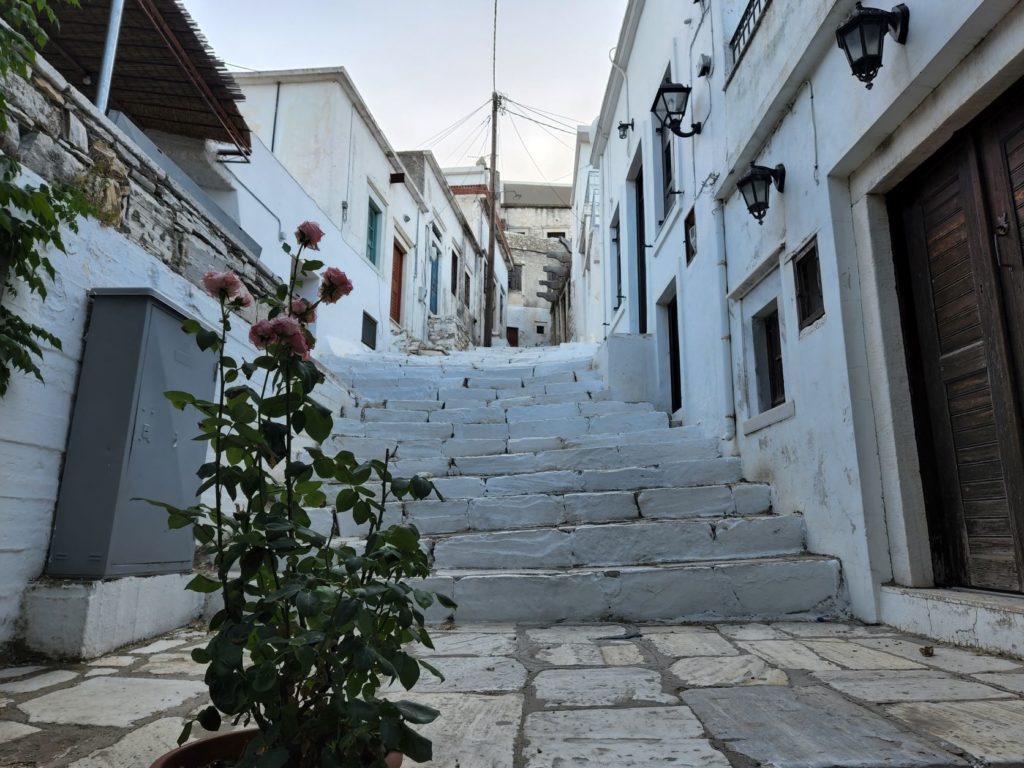
The island of Naxos also has a handful of small villages nestled in their mountains. We saw two villages during our trip. The first was the village of Filoti, which is where we started the hike to Mt. Zas. We mainly just walked through the main streets of the village to get to the hike, but it looked like it had some nice restaurants and boutique shops. It looked like there were also other hiking trails that you could get to from the village.
We spent more time in the village Apeiranthos. This village is high up in the mountains with a walled city that transports you to the past. It also has an interesting history. This village was settled by refugees from Crete who created their own unique Greek dialect. Their language is so unique that other Naxians sometimes cannot understand them. We wandered the walled city until we found a restaurant serving traditional Naxian food. We ate on the balcony overlooking the mountains and valleys. After our meal, we visited a small shop with goods made in that village. Here we bought a small bottle of olive oil and ouzo and a locally made wine. When I asked the woman working in the shop if the wine was any good, she opened a bottle and gave us samples on the spot!
Ancient Ruins
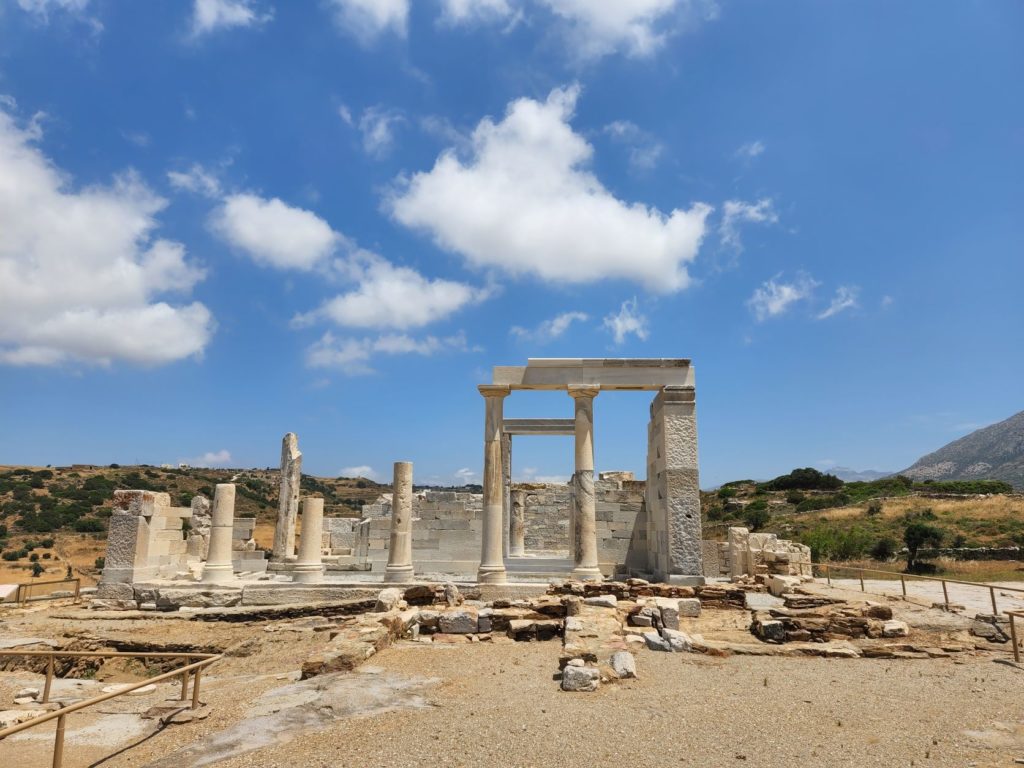
No trip to Greece would be complete without visiting some Ancient Greek ruins. The island of Naxos has old temples and portara dedicated to various Greek gods. We visited the temple of Demeter and Portara of Apollo.
The Temple of Demeter is near the village of Sangri in Naxos. Demeter is the goddess of agriculture, so people used to build temples dedicated to her on fertile land. This temple dates back to 6th century BC and is made of Naxian marble. When Christianity took over Greece, the temple was taken over, then was partially restored in the mid-1900s. When visiting, you can still imagine ancient Naxians visiting the temples and laying down offerings for Demeter to bless their crops.
The Portara is a remnant of the unfinished Temple of Apollo dating back to 530 BC. It is one of the most famous sites in Naxos and a prominent marker of the island. It is located on the islet of Palatia, but has a pedestrian-only footback from Naxos town. You can walk to this Portara and look out through the giant marble gate through to the sea.
The Temple of Dionysus is also on Naxos, though we did not make it this temple. This site was also a fertility cult dating back to about 1400 BC.
Fresh, Delicious Food:
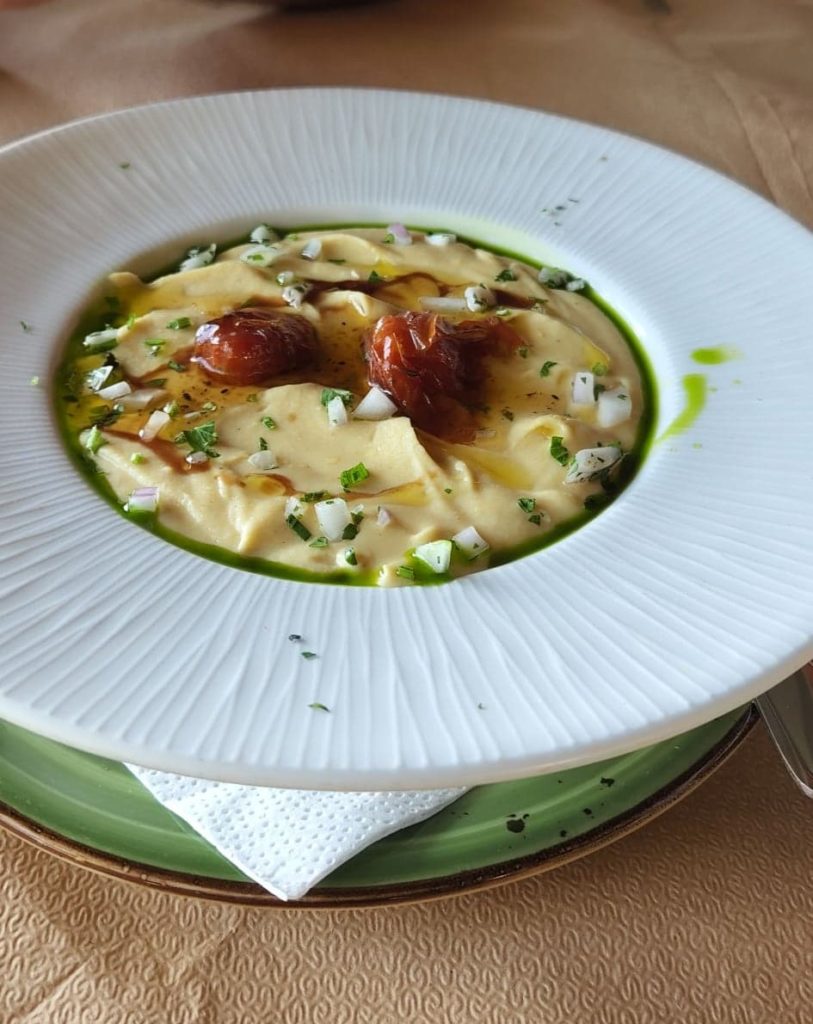
Naxos is known as the bread basket of the Cyclades, and the food lives up to that reputation. Nearly everywhere you eat is a farm-to-table restaurant. The villa we stayed at served a complimentary continental breakfast with fruit freshly picked from its garden. During our five days on the island, we never ate a disappointing meal.
If you’re visiting Naxos, don’t miss out on:
- Greek yogurt: Yogurt is actually one of my favorite foods, and I was super excited to try some in Greece. What I didn’t know was that Naxos has its own version of Greek yogurt made just on the island, which we ate every day for breakfast and sometimes for dessert. This yogurt is incredibly creamy and flavorful and will ruin all other yogurts for you. It’s often served with candied fruits in sweet syrup.
- Pork Rosto: I’m a garlic lover, so this dish immediately caught my eye. It is pork stuffed with garlic and braised in wine. While you’re eating the pork, you’ll also get chunks of roasted garlic.
- Fries: Naxos is also known for its potatoes, and you can find their fried potatoes on nearly every menu.
- Rooster in tomato sauce: Rooster is a very popular dish to find in Naxos, and this is typically served braised in tomato sauce.
- Fava dip: This dip is similar to hummus and typically served with Pita
- Naxian cheese: I don’t typically eat cheese, so I did not try any Naxian cheese. However, I was told this cheese is really unique and delicious. If you like that kind of thing.
Naxos also has plenty of other standard Greek fare like souvlaki, gyros and greek salad. Santorini Dave has a lot of recommendations of best places to eat from standard Greek dishes to unique Naxian foods.
Logistics
Getting there:
You can get to Naxos by airplane or ferry. There are flights that go between Athens and Naxos about twice per day, with more flight during high season. We flew on the Greek airline Sky Express, which has flights primarily during the summer season.
There are also plenty of ferries going between Cyclades islands and Athens. We rode on a fast ferry from Naxos to Athens, which took about 3.5 hours and stopped at Paros, Mykonos and Milos.
Where to Stay:
We stayed in a villa off of Plaka beach, but the most popular place to stay is Naxos Town.
Naxos Town is where you should stay if you want to be in the thick of the action. This area has a high concentration of restaurants, bars, clubs, cafes and museums. It also has close proximity to the Portara and easy access to bus lines and the port.
If you stay in a smaller beach town like we did, there are still delicious local restaurants and small markets around. It is also quieter and cheaper to stay in a place overlooking the sea.
You can also stay in one of the mountain villages. If you prefer to stay far away from cities and don’t care for the beach, a village stay may be right for you.
It’s good manners to learn a few phrases in the local language anywhere you visit, but this is especially true if you choose to stay outside the main town. It’s smart to learn:
- Hello: Yassas
- Do you speak English?: Milate Anglicka?
- Thank you: Efhourista
Getting Around:
Naxos is a big island, so being able to get around is important. There is a public bus that runs more during busy season, but it was honestly difficult to find too much information around that. We ended up renting a car for two days on the island to get to the hike, village and ruins. We could have made this work with public transit/taxis, but ultimately chose a rental car for more freedom.
Safety:
Naxos is incredibly safe. When walking on the dirt roads, just be aware of cars. Additionally, there are not a lot of street lights in certain parts of the island at night, so be sure to have a flashlight if walking around the island after dark.
When to go:
The most popular time to visit any of the Greek islands is in the summer time between late June to August. They also have a shoulder season in May and September. A taxi driver in Athens told us that Naxos gets much busier in late June/early July, but commended us on our choice to go there in June. If you go during these months, be prepared to potentially face the Meltemi winds.
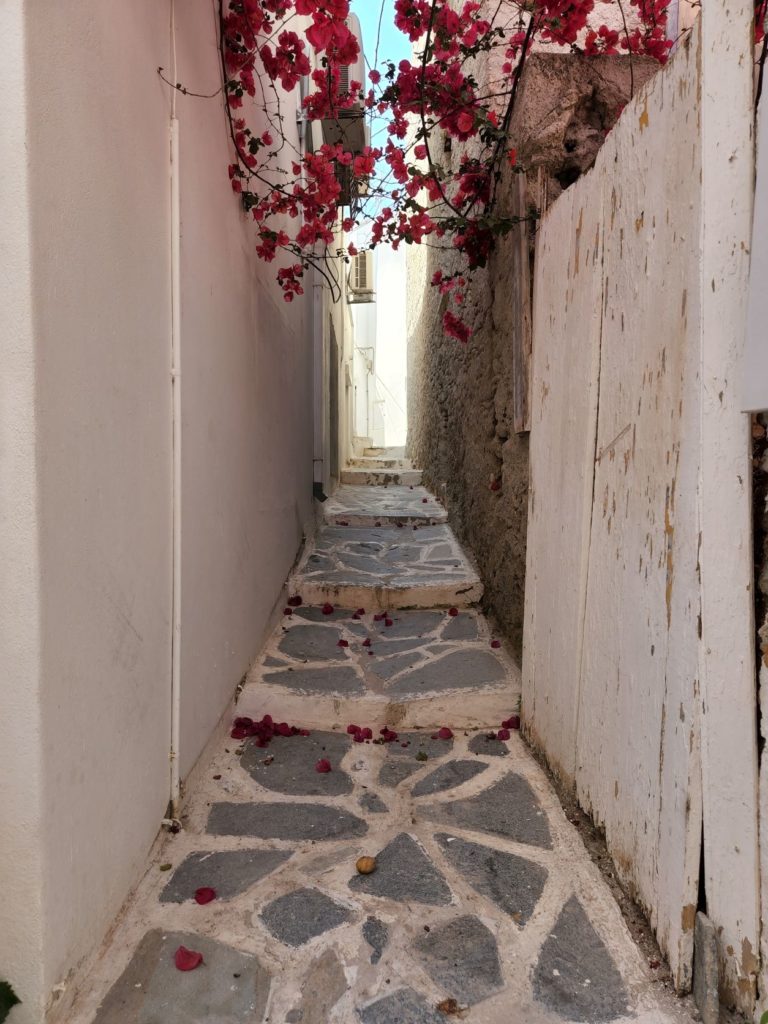

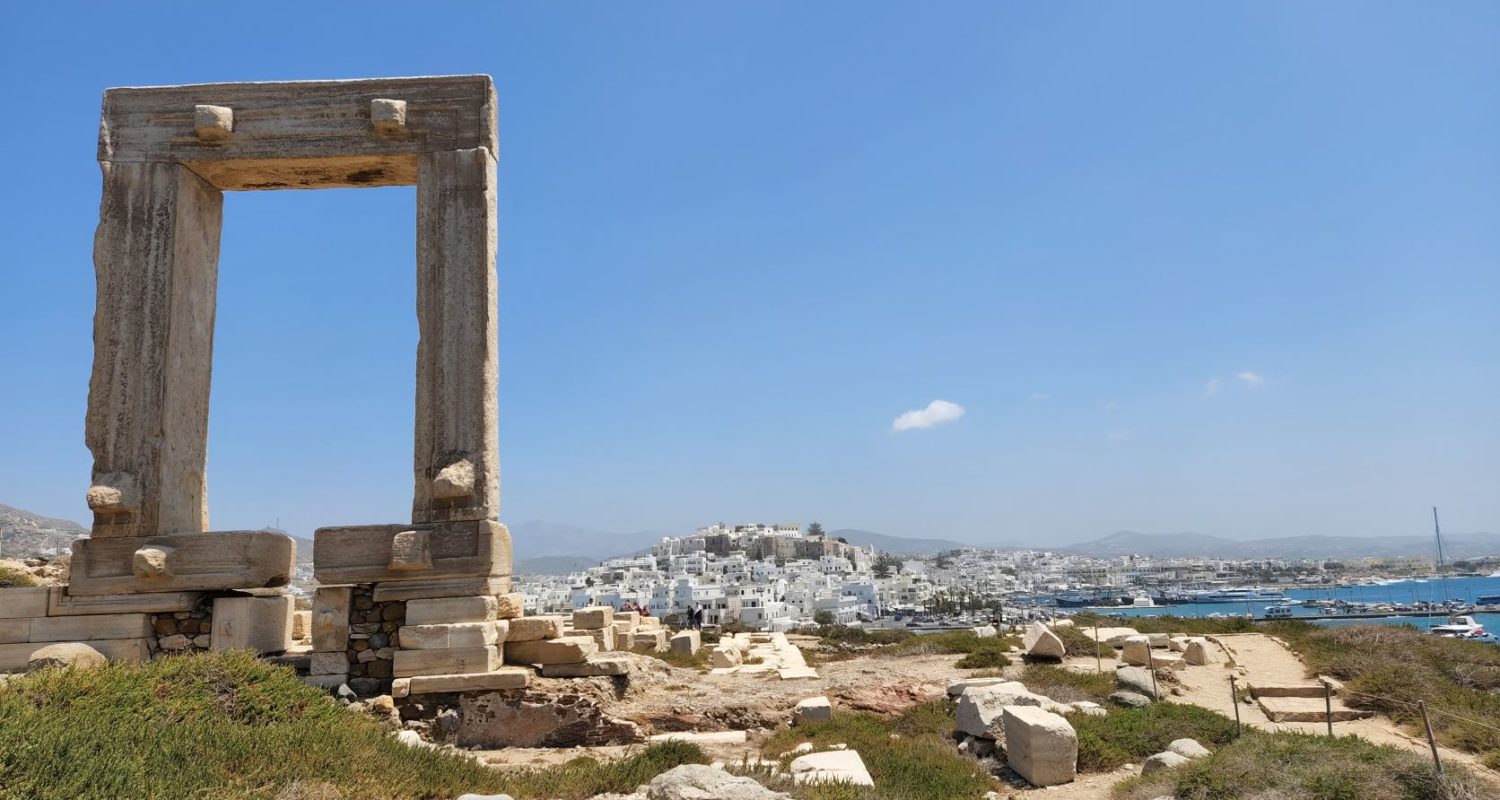
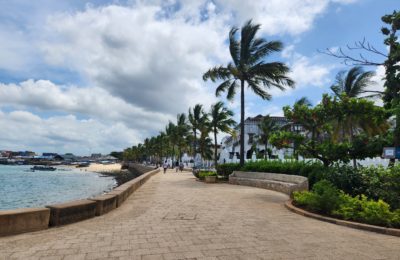
One thought on “Naxos: How to Decide on a Greek Island Destination”